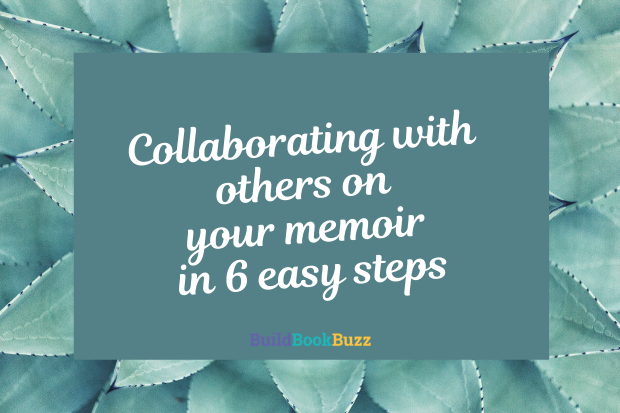Collaborating with others on your memoir in 6 easy steps
Our guest blogger this week is Beth N. Carvin, CEO and co-founder of JamBios, a free, online collaborative memoir writing platform you can use to create “The Story of You.” If you plan to write a memoir, you definitely need to explore the potential this tool offers to expand and inform your story.
Collaborating with others on your memoir in 6 easy steps
By Beth N. Carvin
Writing a memoir is an exciting opportunity to dig into your memories and create something personal and lasting for your family and friends.
Getting started may feel overwhelming but it need not be, especially if you involve others to help remember with you. By reaching out to important people in your life and asking them to add memories, you can enrich your biography with stories from others that you might never have discovered otherwise.
Collaborating with others on your memoir not only makes your book better, it also makes the process more fun.
Imagine the same feeling you get from reminiscing around the dinner table with family—but the stories are saved and organized online or in a ready-to-print book. Here are six easy steps for writing your memoir collaboratively with others.
1. Throw away timelines and write memories of whatever strikes your fancy.
If you want to start with writing about your ancestors you can, but don’t feel constrained to writing about your life sequentially. You can always re-order your stories later. Some people like to start with the lighthearted—the camping trip where a bear sniffed your picnic basket, the Thanksgiving when Uncle Bob forgot to wear pants, or the greatest puppy in the whole wide world.
Write as much detail as you remember—including the senses. Did it smell a certain way? Do you remember the feel on your skin?
When you paint a clear picture you’re more likely to trigger additional memories from others and make it easier to remember together.
2. Add photos as inspiration.
If you have any photos or related images that match the topic about which you are writing, add them to the text. Your friend or family member might remember all sorts of additional details that were happening at the time of the photo which you know nothing about.
Don’t be afraid to ask questions—”Why were you holding a trophy?” “What was that goop in your hair?” “Who was that kid in the back of the photo?”
Who knows what new details you might uncover just by asking?
3. Who are your collaborators? Anyone who was there!
A memoir is a series of memories, and most memories include other people. When writing a memoir with help from others, you can select who you’d like to add to which memories.
If you’re writing about your school days, who were some of your friends at that time?
If you’re writing about family gatherings and traditions, what relatives might have some zany memories of their own?
If you’re writing about the first pet you ever had, which of your siblings or cousins would remember little Fifi?
For whatever story, event, person, or pet you’re remembering, brainstorm a list of a few people who might have fun anecdotes, fresh perspectives, or new details to add.
4. Request a memory.
Once you have your list of potential memory writers, reach out via email, social media, or an online memoir or writing platform that makes it easy to connect and share stories. Let them know you are writing an informal autobiography and would like their input.
Share one of the stories with a memory they will remember. Ask them specifically, “What do you remember about this story?”
5. Provide helpful prompts if needed.
If you’d like, you can use creative questions to help spur your family and friends’ memory.
For example, if you’ve written a memoir section about the family reunion you attended as a child, you might ask relatives: “Do you remember Uncle Edgar tripping into the punch bowl and spilling it all?” or “Do you know why Grandma danced so crazily that day when she had never done anything like that before?”
6. Have fun sharing details and going through the memories together—and remember to save your stories.
You’ll find that once you get the reminiscing ball rolling, it can be tough to stop. But why would you? Like so much in life, memories are far better when enjoyed together —and your memoir will be so much richer for having included forgotten memories from family and friends.
Make sure that as you’re building your collaborative memoir, you keep all of your favorite stories somewhere safe and secure so that you’ll never forget them again. And most of all, enjoy the memories.
If you’re writing a memoir, are you getting input from others? How are you requesting that help?
Like what you’re reading? Get it delivered to your inbox every week by subscribing to the free Build Book Buzz newsletter. You’ll also get my free “Top 5 Free Book Promotion Resources” cheat sheet immediately!



Sandy, thanks for hosting Beth Carvin and her great tips on writing a memoir by collaborating with others. With increasing interest in through DNA heritage and genealogy, many folks want to write their memoirs but need guidance such as provided by Beth’s JamBios. By inviting family and friends to add to our stories, we are guaranteed to create a memoir that is deeper and richer than we could have put together relying on our own memories alone.